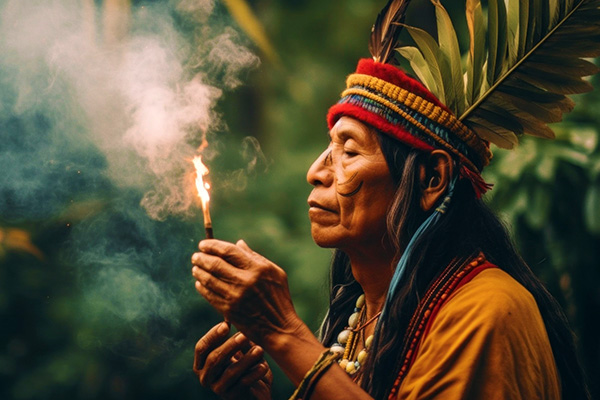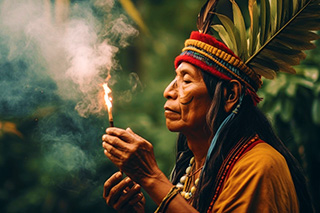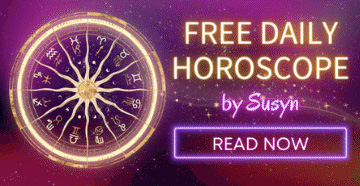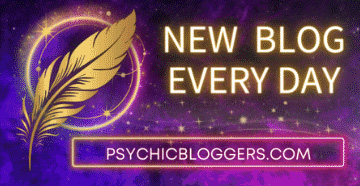The Ancient Spiritual Practice Of Shamanism




Shamanism is probably the oldest known spiritual practice, with roots dating back to the dawn of humanity. It has emerged independently in different cultures around the world, making it a diverse and culturally rich phenomenon.
Shamanism is thought to have emerged during the Paleolithic era, possibly as early as 30,000 years ago. This makes it one of humanity’s earliest forms of organized spiritual practice. The specific practices and beliefs of shamans varied greatly depending on the cultural context and environment in which they developed.
Despite its cultural diversity, shamanism shares certain universal characteristics. Shamans typically act as intermediaries between the human and spirit worlds, facilitating communication with spirits for healing, guidance, and protection. The use of altered states of consciousness such as trance, drumming, chanting, and dancing is common to various shamanic traditions.
Shamanism is not a monolithic practice, but encompasses a wide range of beliefs and rituals. It has been found in diverse cultures around the world, including the indigenous peoples of Siberia, North and South America, Africa, Asia, Australia, and parts of Europe. Each culture has developed its own unique forms of shamanism based on local traditions, environment, and cosmology.
Central to many shamanic practices is a deep reverence for nature. Shamans often view the natural world as sacred and believe in the interconnectedness of all living beings. Nature spirits, animals, and elements play important roles in shamanic cosmologies. Shamans are traditionally also revered for their healing abilities, treating physical, emotional, and spiritual ailments through ritual, ceremony, and herbal medicine. They also serve as spiritual counselors and mediators, providing guidance to individuals and communities.
Shamanism played a crucial role in the spiritual development of early human societies. It provided a framework for understanding and interacting with invisible forces, promoting social cohesion, healing, and survival. Despite the influence of modernization and globalization, shamanism continues to thrive in many indigenous communities today. While some aspects of shamanic practice have evolved over time, the core principles and techniques remain deeply rooted in ancient traditions.
In recent decades there has been a growing interest in shamanism among people seeking alternative spiritual paths. A myriad of books, seminars, and extensive training programs around the world reveal a keen exploration of indigenous cultures and their connection to nature, their healing techniques (such as soul retrieval), and the role of power animals or totems. This has led to a resurgence of interest in traditional shamanic practices and an exploration of their relevance in contemporary society.
The Modern Benefits Of Shamanism
Modern spiritual seekers can benefit from exploring shamanism for several compelling reasons, particularly in gaining insights into humanity’s ancient spiritual roots and understanding our interconnectedness with nature and the cosmos. Here are some key reasons why exploring shamanism can be valuable for today’s spiritual seeker:
Ancient Wisdom and Origins: Shamanism is one of the oldest known spiritual practices, with roots dating back tens of thousands of years. By delving into shamanic traditions, modern seekers can tap into ancient wisdom and explore the foundational aspects of human spirituality. Understanding shamanism offers a deeper connection to our shared human heritage and the evolution of consciousness.
Holistic Healing and Well-being: Shamanic practices emphasize holistic healing, addressing not only physical ailments but also emotional, mental, and spiritual imbalances. Modern seekers can benefit from shamanic techniques such as energy clearing, soul retrieval, and ceremony to promote overall well-being and restore balance in their lives.
Connection with Nature: Shamanism highlights a profound reverence for nature and the interconnectedness of all living beings. Exploring shamanic beliefs and practices can deepen one’s connection with the natural world, fostering environmental awareness, stewardship, and a sense of harmony with the Earth. Learning the tools of the shamanic practitioner offers a new dimension of metaphysical understanding based on interspecies communication. The shamanic practitioner visits the plant deva spirit to ask what it has to offer for healing. In fact, if you’ve ever had a problem with ants in your house, and you decide to ask them to leave, and they leave within a day or two, then you’ve experienced a mid-world journey of inter-species communication.
Spiritual Growth and Personal Transformation: Shamanic journeying and rituals facilitate profound spiritual experiences that can lead to personal growth and transformation. By exploring altered states of consciousness and communicating with spirit guides, modern seekers can gain insights into their true selves, life purpose, and spiritual path.
Cultural Understanding and Identity: Shamanism is deeply intertwined with diverse cultures and indigenous traditions around the world. By studying shamanic practices, modern seekers can appreciate the richness of cultural diversity and gain a deeper understanding of their own spiritual identity and ancestral heritage.
Psychological Insight and Integration: Shamanic rituals often involve working with archetypes, symbols, and the subconscious mind, offering valuable insights into the psyche. Modern seekers can use shamanic techniques to explore and integrate unconscious aspects of themselves, promoting psychological healing and self-awareness.
Community and Connection: Shamanic practices are often communal and foster a sense of community and connection among participants. Exploring shamanism can provide modern seekers with opportunities to connect with like-minded individuals, share experiences, and support each other on their spiritual journeys.
Relevance in Contemporary Society: Despite its ancient origins, shamanism continues to be relevant in addressing modern challenges such as stress, anxiety, and disconnection from nature. Its holistic approach to healing and spirituality offers practical tools that can complement and enrich modern lifestyles.
Exploring shamanism can therefore offer us a profound and transformative journey into the depths of human spirituality, providing valuable insights, healing practices, and a renewed sense of connection with the natural world and the spiritual realms. By embracing shamanic wisdom, we can cultivate a more integrated and harmonious approach to life, rooted in ancient traditions yet relevant to the complexities of modern existence.
The Calling Of The Shaman
Shamanism in its classical sense originated in the regions of Siberia and Central Asia, and the term “shaman” comes from the Tungusic word saman (male) or samana (female). The term shaman is often confused with ‘medicine man’, ‘witch doctor’, ‘sorcerer’ or ‘magician’ – but a shaman is so much more. The shaman is traditionally a central figure in the community: mystic, poet, healer, communicator with the unseen realm, and psychopomp (leader of souls).
Personal experiences in the realm of shamanism are typically very euphoric and relaxing, often described as dreamlike or ecstatic. The divine calling of the shaman or shamanic practitioner manifests in several different ways:
- Divine calling from spirit (ecstatic dream, illness, or near-death experience)
- Hereditary through family lineage
- Apprenticeship
- Individual choice
All of these means of being “called to spirit” involve some form of initiation and ritual. Every clan, tribe, and culture around the world passes on their teachings, rituals, and creation stories through tradition. However, they all have a central theme, which is the ability to communicate with the unseen realm to gain knowledge, healing, the ability to “conquer death,” and that we are all part of both the spiritual and physical realities.
Shamanic Journey Of The Three Worlds
When you practice shamanism, you traverse different realms in an altered state of consciousness, known as the “three worlds,” which refers to different spiritual realms or dimensions that practitioners access during shamanic journeys or trance states. These three worlds are referred to as the Lower World, the Middle World, and the Upper World. Each world serves specific purposes and contains unique spiritual beings and energies.
LOWER WORLD
The Lower World is associated with the subconscious mind and the realm of spirits connected to the Earth. It is accessed by descending deeper into the earth or by journeying through natural landscapes like caves, tunnels, or forests.
In the Lower World, shamans may encounter spirit guides, power animals, and ancestors. This realm is visited for healing, retrieving lost soul parts, or connecting with nature spirits. The Lower World is sometimes depicted as a primal or ancient landscape, rich in symbolism and spiritual significance.
MIDDLE WORLD
The Middle World corresponds to the ordinary physical reality where we live and interact in our daily lives. It is the realm of human experiences, including our environment, communities, and relationships. Shamans journey to the Middle World to address present-day issues, seek guidance for practical matters, or connect with living beings like friends, family members, or animals. This realm is characterized by familiar landscapes and locations that reflect our everyday experiences.
UPPER WORLD
The Upper World is associated with higher consciousness, spiritual enlightenment, and cosmic energies. Shamans access the Upper World by ascending into the sky, flying over landscapes, or climbing celestial structures.
In the Upper World, shamans encounter divine beings, ascended masters, angels, or other spiritual guides who offer wisdom, insight, and guidance. This realm is ethereal, filled with light, and symbolizing transcendence beyond earthly concerns.
These three worlds represent different aspects of existence and consciousness within shamanic cosmology. Shamans navigate these realms through trance states induced by rhythmic drumming, chanting, or other techniques to seek guidance, healing, and spiritual growth. By journeying through the three worlds, practitioners aim to access hidden knowledge, gain perspective, and facilitate personal transformation.
The three worlds are traversed by the shaman through the journey process, which can be facilitated in a number of ways. In indigenous cultures it is historically achieved through fasting, prayer, ritual, and mind-altering drugs such as peyote or ayahuasca. A much more relaxed and less invasive way is to use drumming, chanting, didgeridoo or other monotone rhythms to induce a trance state.
We use the term “journey” because the shamanic practitioner is supposed to change his or her state of consciousness and journey out of the physical body to commune with the divine. The monotonous rhythm of the drum shifts our brainwave patterns into an altered state of consciousness to the extent that we have an ecstatic experience.
Each journey has a specific goal or purpose: healing, plant communion, divination, prophecy, releasing the souls of the physically departed, and so on. After completing the task at hand, the shamanic practitioner returns to this reality with the necessary answers or remedies. Individual seekers may also create their own private rituals as part of the process of divine journey communication.
Power Animals, Spirit Guides And Totems
If you are interested in nature spirits, you may want to explore the world of shamanism and the symbolism of nature and animals, as they are messengers influenced by the spirit world to help us. We just need to understand their language of communication.
In shamanism, a power animal, spirit guide, or totem is a spiritual entity that serves as a protector, teacher, or ally for a shaman or individual practitioner. These beings are believed to offer guidance, wisdom, and assistance in navigating spiritual realms, gaining insights, and performing healing work. The concept is found in various indigenous cultures worldwide and plays a significant role in shamanic practices.
POWER ANIMALS
A power animal is a spiritual being or essence that takes the form of an animal. It is believed to embody certain qualities, attributes, or energies that resonate with an individual’s spiritual path or needs. A power animal can act as a guardian and provide support, strength, and wisdom during shamanic journeys or daily life.
Power animals provide protection, guidance, and assistance and represent specific qualities such as strength, intuition, courage, or healing abilities. They primarily act as a teacher, offering lessons and insights relevant to personal growth and spiritual development.
SPIRIT GUIDES
A spirit guide is a broader term that encompasses various spirit beings beyond animals, including ancestors, angels, ascended masters, and other non-animal entities. In shamanism, a spirit guide is a wise and benevolent being that assists a shaman or seeker on their spiritual journey.
Types of spirit guides may include ancestral guides (deceased relatives or ancestors who offer wisdom and guidance), nature spirits (beings associated with elements of nature like trees, rivers, or mountains), and ascended masters (enlightened beings who serve as spiritual teachers and mentors).
TOTEMS
A totem is often used interchangeably with the term “power animal” or “spirit guide” but can refer to a specific animal or symbol that represents a clan, tribe, or family lineage in indigenous cultures. Totems are revered as spiritual symbols of identity, protection, and connection to ancestral spirits.
Totems represent the characteristics, qualities, or lessons associated with a particular animal or symbol and often symbolize kinship, unity, and collective identity within a community. They are used in rituals, ceremonies, and spiritual practices to invoke the power and wisdom of the totemic spirit.
Understanding and working with power animals, spirit guides, or totems can deepen one’s spiritual connection, provide insights into personal strengths and challenges, and foster a sense of unity with the natural world and spiritual realms. These spirit entities are allies and companions on the spiritual journey, offering profound support and assistance to those who seek their wisdom.
So, how do you know what you power animal, spirit guide or totem is? In shamanic practice, we can connect with our power animals or spirit guides through meditation, journeying, or rituals. This process can also be facilitated by a more experienced shamanic practitioner. Building a relationship with these spirit beings involves openness, receptivity, and a willingness to learn from their teachings and guidance.
In my opinion, it is preferable for to make the journey to meet their power animal, rather than having a shamanic practitioner simply tell them what their totem is. It becomes a more intimate and rewarding validation of the relationship and connection in spirit.
Merging with your totem is a process of attunement with your nature spirit. As you attune, you are effectively going into a light trance. As you merge deeper, there can be a transfiguration as some see the animal or teacher they are merging with. You may also begin to take on the personality and character traits of the power animal as you merge even deeper. The shamanic practitioner will typically respond with the traits and mannerisms of the teacher. This is also when you practice ‘not coloring the medium’. This means that if your totem is in a place of strength or assertiveness in the spirit realm, you do not bring that into this reality.
Power animals that we have not yet connected with may be in our lives through our fascination with a particular animal or through collecting pictures or statues of a particular animal. Common power animals include the tiger, bear, eagle, hawk, wolf, snake, coyote and, from the less assertive species, power animals such as the butterfly, deer, frog and dolphin. Trees and rocks can also be totems and serve as a source of divine inspiration, but these are less common.
Our power animals or totems change as we go through our spiritual evolution or when we need a particular nature vibration in our lives. Some consider themselves to have a primary power animal that was imbued with them at birth, and we simply haven’t connected with them. As we develop our shamanic techniques, the primary power animal may play a less prominent role as we learn to interact with multiple species of nature.
Shamanic Healing Practices
Shamanic healing is a holistic approach to healing that encompasses various spiritual practices aimed at addressing physical, emotional, mental, and spiritual imbalances or ailments. In shamanism, illness and suffering are often viewed as manifestations of energetic disturbances or spiritual disharmony, and healing involves restoring balance and harmony within the individual’s energy field and connection to the spiritual realm.
Shamanic healing recognizes the interconnectedness of mind, body, and spirit, viewing illness as an imbalance or disruption in the energetic field. Practitioners work with subtle energies, such as life force (chi or prana), spirit energies, and the energetic imprints of emotions and experiences. Shamanic healing also involves working with spiritual guides, power animals, and other spiritual allies to diagnose and address the root causes of illness or suffering. Shamans act as intermediaries between the physical world and the spiritual realm, facilitating healing through spiritual interventions.
JOURNEYS AND VISION QUESTS
Shamanic practitioners enter altered states of consciousness through drumming, chanting, or other methods to journey to the spirit realms and gain insights into the causes of illness or disharmony. During these journeys, practitioners may seek guidance from spirit guides, retrieve lost soul parts, or perform healing rituals.
ENERGY CLEARING
Shamanic healers identify and remove energetic blockages, intrusions, or negative attachments that contribute to illness or imbalance. This may involve techniques such as sweeping, sucking, or extracting energetic disturbances from a person’s energy field.
SOUL RETRIEVAL
Soul retrieval is one of the more common healing aspects being popularized in shamanic practice today. Soul retrieval is where the shamanic practitioner visits a non-ordinary reality to bring back those traumatized parts for reintegration as a function of the healing process. It is a profound healing practice aimed at retrieving lost or fragmented soul parts due to trauma, emotional wounds, or significant life events. The shaman journeys to the spirit realms to locate and reintegrate these soul fragments, restoring wholeness and vitality to the individual.
RITUALS AND CEREMONIES
Shamanic healing often involves the use of rituals, ceremonies, and sacred objects to create a sacred space and invoke spiritual energies for healing. Ceremonies may include chanting, prayer, drumming, dancing, and the use of medicinal plants or herbs for purification and empowerment.
Exploring shamanism as an ancient spiritual practice in a modern world offers a profound journey of self-discovery, healing, and connection with ancient wisdom. Embracing shamanic teachings can lead to a deeper understanding of our interconnectedness with nature, spirit, and the cosmos.
Through shamanic rituals, journeying, and communing with spirit allies, one can embark on a transformative path of personal growth, spiritual evolution, and holistic well-being. By exploring shamanism, you open the door to a world rich in sacred traditions, profound insights, and healing practices that resonate with the deepest aspects of the human soul.
Consider taking the first step into this ancient and enlightening realm to awaken your spirit, expand your consciousness, and embrace the wisdom of our ancestors.
|
Graham has developed a powerful connection with Spirit that he shares with the world, passing along valuable and detailed information that includes specific dates and time frames. His service to Spirit has allowed him to transform countless lives and it continually validates continuity of life. Spirit has even saved his own life! Colleagues have learned to trust his advice, even if they can't explain how he does what he does. With many loyal clients around the world to attest to his talent, Graham continues to reach many more through his eight CD audiobook on Mediumship and other Metaphysical subjects. Graham was born in England but now resides in New England. He's a certified Medium, Channel and Spiritual Healer, to name but a few of his offerings. He is also a teacher and has served on Spiritualist committees in the US and in Europe. He's provided thousands of readings and also loves to give back to the community, offering his services at fundraising events, local hospices, churches and camps—wherever he is needed. |
SHARE THIS PAGE
New customer? Your first reading with us is FREE with any available psychic of your choice.
Yes we are that confident you will love us!
SIGN UP NOW!
No credit card required.
Discover your fate and fortune with your FREE daily horoscope from our expert astrologer, Susyn. Find out what the planets in your zodiac sign have in store for you today!
Get daily doses of psychic wisdom and spiritual inspiration from our gifted team of psychic advisors. We post a new blog every day. Dive into our official blog at PsychicBloggers.com!





